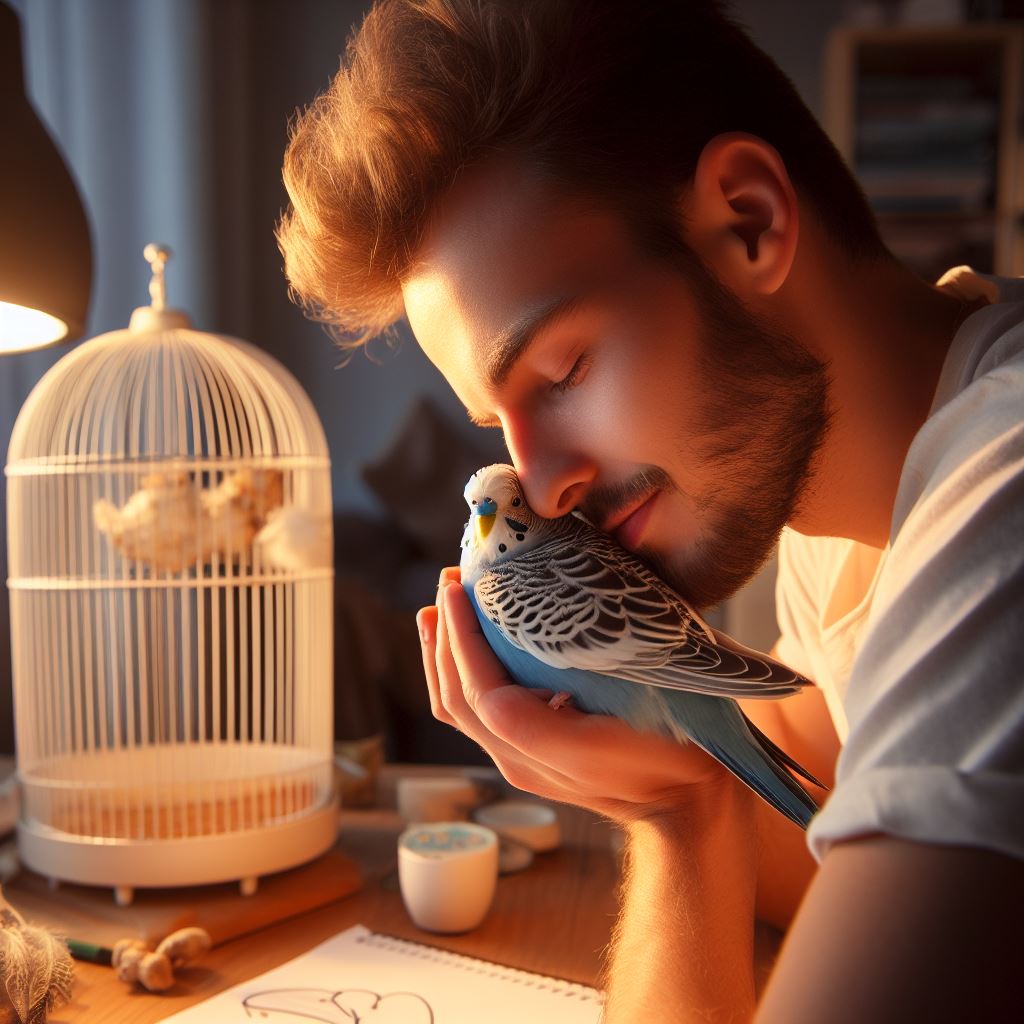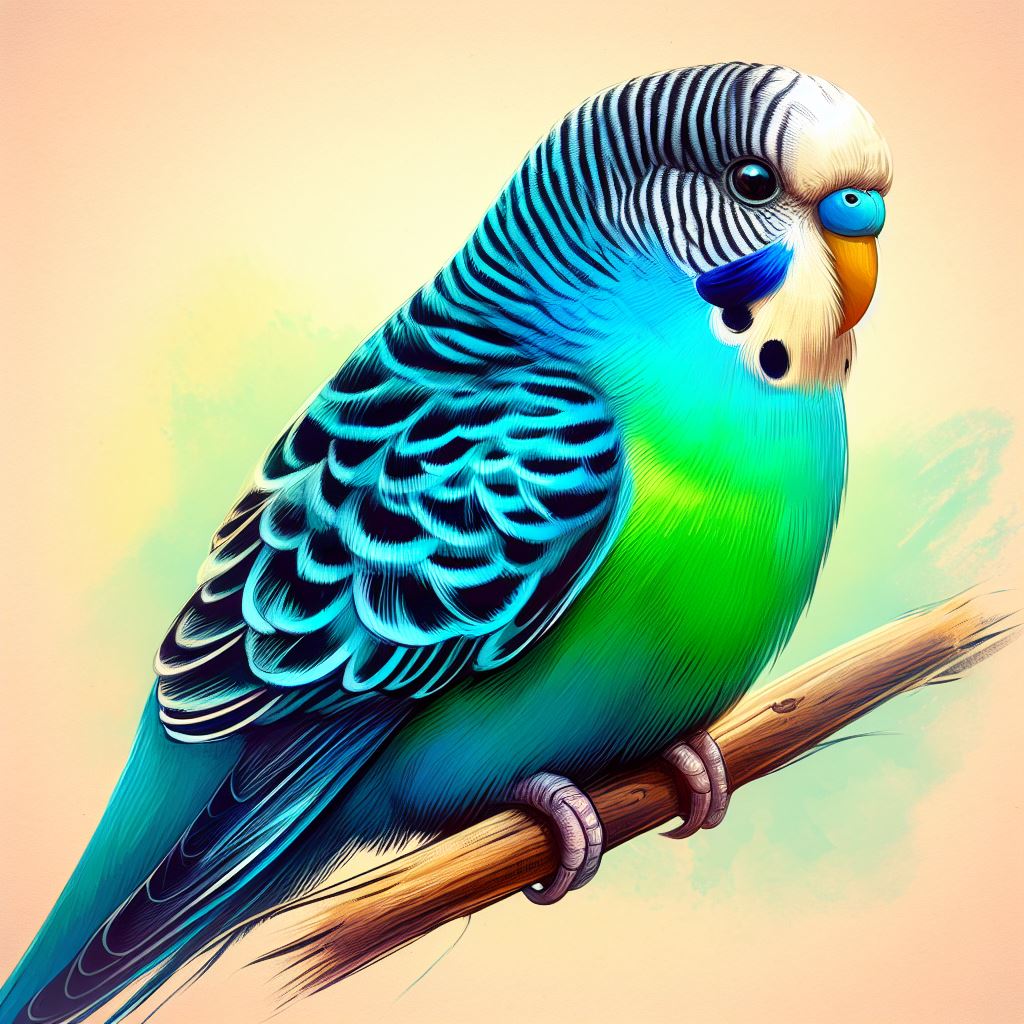The Enigmatic World of Budgerigars: A Deep Dive into These Tiny Feathered Friends
Unlock the enchanting world of Budgerigars! Delve into the lives of these tiny feathered companions, from their vibrant plumage to their heartwarming presence in our homes. Discover their captivating colors, joyful personalities, and the magic they bring to our lives. Get access now and embark on a journey of wonder and connection. 🐦✨

Table of Contents
- Introduction
- The Origin of Budgerigars
- Budgerigars’ Natural Habitat
- The Colorful Plumage of Budgerigars
- Table 1: Budgerigar Color Variations
- Behavior and Social Structure
- Table 2: Budgerigar Chirps and Calls
- Budgerigars as Beloved Companions
- Table 3: Budgerigar as Pets – Quick Tips
- Caring for Your Budgerigar
- Common Health Considerations
- Breeding Budgerigars
- The Allure of Budgerigar Mutations
- Budgerigars in Our Hearts
- Protecting Their Natural Home
- Frequently Asked Questions
- Conclusion
Introduction
Budgerigars, often lovingly referred to as “Budgies,” are some of the most captivating and enigmatic creatures to grace our world. These tiny parrots have won the hearts of bird enthusiasts and pet owners alike with their vibrant plumage and charming personalities. In this comprehensive article, we will embark on a journey to uncover the secrets of these delightful avian companions. From their origins to their care as pets, we’ll explore every facet of the world of Budgerigars.
The Origin of Budgerigars
Budgerigars are native to the arid regions of Australia, where they have thrived for thousands of years. These small parrots have adapted to life in the wild, displaying a remarkable ability to survive in challenging environments. They are known for their distinctive green and yellow plumage, which provides excellent camouflage in the Australian bush.
Budgerigars’ Natural Habitat
The natural habitat of Budgerigars primarily consists of open woodlands, grasslands, and scrublands across Australia. Their nomadic nature allows them to move in search of food and water, making them resilient to changing environmental conditions. It’s a testament to their adaptability that they have successfully inhabited various regions of the continent.

The Colorful Plumage of Budgerigars
One cannot help but be entranced by the stunning colors of Budgerigars. Their feathers can display a wide range of hues, including blues, purples, and even yellows. This vibrant plumage serves multiple purposes, from attracting mates to camouflaging against predators.
Table 1: Budgerigar Color Variations
- Green: Most common in the wild.
- Blue: A striking shade of blue.
- Yellow: Vivid and eye-catching.
- Violet: A rare and sought-after mutation.
- Albino: Completely white with red eyes.
Behavior and Social Structure
Budgerigars are highly social birds known for their playful and curious nature. They form tight-knit flocks in the wild and rely on their flock for protection and companionship. Their communication is equally fascinating, with an extensive repertoire of chirps and calls.
Table 2: Budgerigar Chirps and Calls
- Chatter: Socializing and bonding.
- Warble: Expressing contentment.
- Screech: Alerting the flock to danger.
- Mimicry: Copying sounds from their environment.
- Singing: Melodic tunes, often at dawn and dusk.

Budgerigars as Beloved Companions
As beloved pets, Budgerigars are second to none. Their small size, charming personalities, and ability to mimic sounds make them ideal companions for bird enthusiasts. Many people around the world have welcomed these feathered friends into their homes.
Table 3: Budgerigar as Pets – Quick Tips
- Cage size: Minimum 18x18x24 inches for a single Budgerigar.
- Diet: Seeds, fresh fruits, vegetables, and clean water.
- Interaction: Spend at least an hour daily talking and playing.
- Training: Teach simple tricks and commands for mental stimulation.
- Health care: Regular vet check-ups and a clean living environment.
- Lifespan: Average 7-10 years, but can live longer with proper care.
Caring for Your Budgerigar
Providing the best care for your Budgerigar is essential for their well-being and happiness. These affectionate birds thrive on human interaction and a healthy environment. Here are some tips to ensure your feathered friend leads a joyful life:
- Diet: Offer a balanced diet consisting of high-quality seeds, fresh fruits, and vegetables. Ensure a clean, freshwater supply daily.
- Exercise: Allow your Budgerigar to spread its wings and fly within a safe, enclosed space to maintain its physical health.
- Socialization: Spend time talking and playing with your Budgerigar. They thrive on interaction and can even learn tricks and mimic sounds.
- Cage: Provide a spacious and secure cage, complete with perches, toys, and nesting boxes.
- Health Care: Schedule regular check-ups with an avian veterinarian to monitor your pet’s health and address any concerns promptly.
These tips not only ensure your Budgerigar’s well-being but also strengthen the bond between you and your feathery companion.
Common Health Considerations
While Budgerigars are generally hardy birds, they can still face health challenges. It’s crucial to be aware of common health issues to ensure early detection and treatment:
- Respiratory Problems: Sneezing, nasal discharge, or labored breathing may indicate respiratory issues.
- Feather Plucking: Excessive feather plucking can be a sign of stress or underlying health problems.
- Digestive Problems: Diarrhea, changes in droppings, or loss of appetite can point to digestive issues.
- Mites and Parasites: Scratching, feather loss, or visible parasites on the skin or feathers are red flags.
- Beak and Nail Problems: Overgrown beaks or nails require trimming to prevent discomfort.
Regular vet visits and a clean living environment can help prevent and address these issues, ensuring your Budgerigar enjoys a healthy life. The emotional connection you build with your pet during these care routines is truly heartwarming.

Breeding Budgerigars
Breeding Budgerigars can be a rewarding experience for enthusiasts. To encourage successful breeding, create a suitable environment with nest boxes and a balanced diet. Budgerigar pairs often form strong bonds, and the female will lay eggs that hatch into adorable chicks. It’s essential to provide proper care for the parents and chicks during this delicate process.
The sight of Budgerigar chicks hatching and growing under your care is an emotional journey filled with wonder and joy. Witnessing new life and nurturing it is a profound experience.
The Allure of Budgerigar Mutations
Budgerigars come in various mutations, each with its unique charm. These mutations alter the bird’s feather colors and patterns, resulting in an array of captivating Budgies. Whether it’s the vibrant Lutino or the striking Spangle mutation, each variation adds to the allure of these feathered companions.
The sight of a rare and stunning Budgerigar mutation can evoke deep emotions of awe and admiration. Their beauty is a testament to the diversity of nature.
Budgerigars in Our Hearts
Budgerigars have left their mark in popular culture, appearing in movies, literature, and even as mascots. Their charming demeanor and ability to mimic sounds have made them endearing characters in various forms of media. From animated films to children’s books, they continue to capture our hearts.
Their presence in our cultural landscape brings joy and nostalgia to many, reminding us of the special place these birds hold in our hearts.
Protecting Their Natural Home
While Budgerigars thrive as pets, their wild counterparts face challenges due to habitat loss and climate change. Conservation efforts are essential to protect these remarkable birds and their natural habitats. Organizations worldwide work together to ensure their continued existence in the wild.
Contributing to the conservation of Budgerigars and their habitat is a heartfelt endeavor that allows us to make a positive impact on the world and preserve the magic they bring to our lives.
Frequently Asked Questions
Here are some common questions about Budgerigars:
- Q1: Are Budgerigars good pets for beginners?
- Q2: How can I tell the gender of my Budgerigar?
- Q3: What is the lifespan of a Budgerigar?
- Q4: Can Budgerigars talk?
- Q5: What do Budgerigars eat in the wild?
Conclusion
In conclusion, Budgerigars are not merely birds; they are enchanting companions that bring joy and wonder to our lives. From their origin in the Australian wilderness to their role in popular culture, They have left an indelible mark on our hearts. Whether you’re a seasoned bird enthusiast or considering bringing one into your home, these tiny feathered friends will undoubtedly leave you captivated.
Get ready to embark on a journey filled with colors, melodies, and heartwarming moments. Budgerigars have a unique way of touching our souls and bringing a sense of wonder to our lives.


